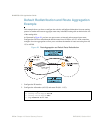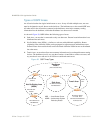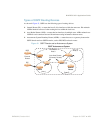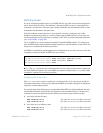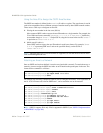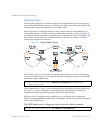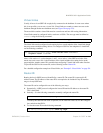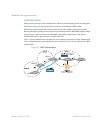
BLADEOS 6.5.2 Application Guide
278 Chapter 20: OSPF BMD00220, October 2010
OSPFv2 Implementation in BLADEOS
BLADEOS supports a single instance of OSPF and up to 4K routes on the network. The following
sections describe OSPF implementation in BLADEOS:
“Configurable Parameters” on page 278
“Defining Areas” on page 279
“Interface Cost” on page 281
“Electing the Designated Router and Backup” on page 281
“Summarizing Routes” on page 281
“Default Routes” on page 282
“Virtual Links” on page 283
“Router ID” on page 283
“Authentication” on page 284
Configurable Parameters
In BLADEOS, OSPF parameters can be configured through the Command Line Interfaces
(CLI/ISCLI), Browser-Based Interface (BBI), or through SNMP. For more information, see
“Switch Administration” on page 25.
The ISCLI supports the following parameters: interface output cost, interface priority, dead and
hello intervals, retransmission interval, and interface transmit delay.
In addition to the above parameters, you can also specify the following:
Shortest Path First (SPF) interval—Time interval between successive calculations of the
shortest path tree using the Dijkstra’s algorithm.
Stub area metric—A stub area can be configured to send a numeric metric value such that all
routes received via that stub area carry the configured metric to potentially influence routing
decisions.
Default routes—Default routes with weight metrics can be manually injected into transit areas.
This helps establish a preferred route when multiple routing devices exist between two areas. It
also helps route traffic to external networks.
Passive—When enabled, the interface sends LSAs to upstream devices, but does not otherwise
participate in OSPF protocol exchanges.
Point-to-Point—For LANs that have only two OSPF routing agents (the G8124 and one other
device), this option allows the switch to significantly reduce the amount of routing information
it must carry and manage.



